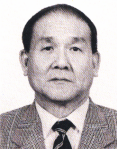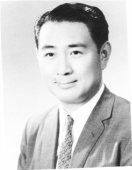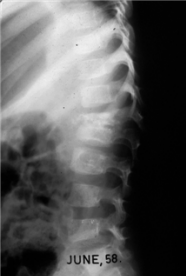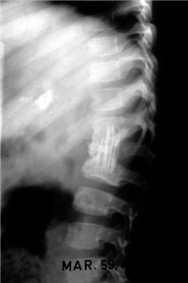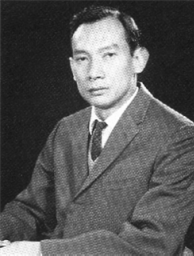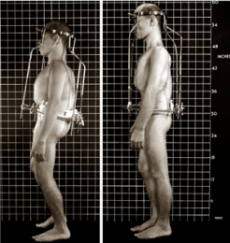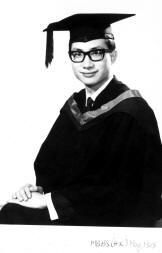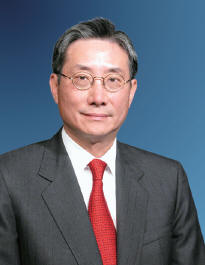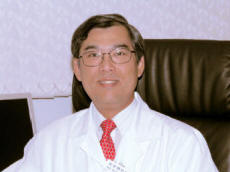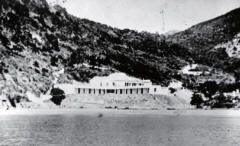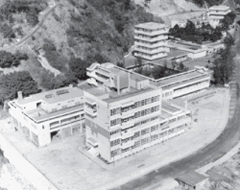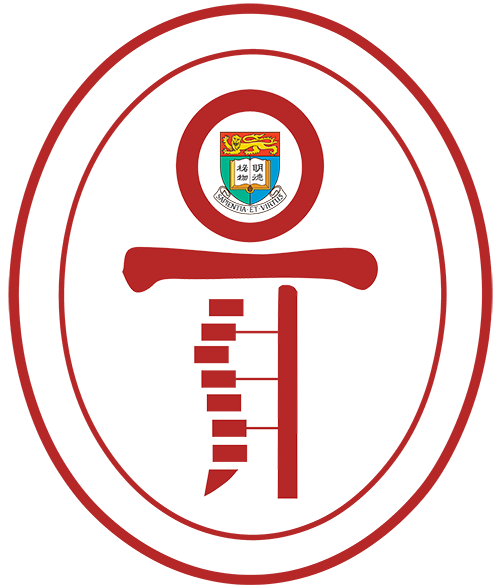About Us
Our History

The academic orthopaedics discipline was introduced to Hong Kong in 1951. Until then, patients with orthopaedic or musculoskeletal trauma problems were mainly treated by general surgeons. In 1951, the Department of Surgery at the University of Hong Kong, led by Professor of Surgery Francis E. Stock, decided it was timely to found an Orthopaedic and Trauma Unit. Dr. A.R. Hodgson was recruited from the UK to head the unit, along with Dr. Harry S.Y. Fang on secondment from the Department of Surgery and Dr. S.F. Lam as clinical assistant.
Formation of the unit made it possible to focus more attention on major orthopaedic problems facing Hong Kong at that time. There were two main groups of diseases, both of Herculean dimensions. Firstly, bone and joint tuberculosis, and in particular spinal tuberculosis, accounted for some 500 new cases per year. Secondly, poliomyelitis, both acute and chronic, was rife with many suffering from paralysis and multiple residual deformities of the musculoskeletal system.
Dr. Fang was a local graduate who pursued postgraduate orthopaedic training in Liverpool and then returned to Hong Kong to serve in the public sector. The two-man team was joined later by Dr. Alan Murley on secondment from the Royal National Orthopaedic Hospital in London. From 1951-61, prior to the formal establishment of the Department of Orthopaedic Surgery, the Orthopaedic and Trauma Unit, under the direction of Dr. Hodgson, made full use of the abundance of spinal tuberculosis to develop unique surgical expertise on the spine, and conduct clinical research even in the face of marked adversity. Applying the anterior approach to treat spinal tuberculosis with radical resection of the disease focus, and anterior strut grafting in compression, earned the department a world-wide reputation for pioneering treatments.
This momentum of clinical research on the spine continued into the 80s and 90s, supplemented by further clinical and basic research, and the Department continues to be an international leader in the field of spinal surgery.
The efforts of Dr. Hodgson and his co-workers made such an impact on the international orthopaedic scene that their method of treating spinal tuberculosis was named the “Hong Kong Operation”. The first paper on this was published in the British Journal of Surgery in 1956, and remains a classic. Further papers on the excellent results of the procedure persuaded the Medical Research Council of Great Britain to initiate a prospective trial of the procedure, comparing it with the more conventional and conservative treatments of the time — anti-tuberculous medication (with or without plaster immobilization) or limited surgical debridement.
Professor Dafydd E. Evans, in his monograph “Constancy of Purpose” celebrating the centenary of HKU’s Faculty of Medicine in 1987, wrote: “The point came in 1961 when the unit was ready to spread its wings and become a fully fledged department within the Faculty. Professor Hodgson was appointed to the Chair of Orthopaedic Surgery and his supporting staff consisted of Dr. Harry S.Y. Fang and Dr. A. Brodetti, an Italian surgeon who later became a Professor in Naples. The department was, of course, still small and still lacked facilities, being housed in tiny premises on Eastern Street in the Sai Ying Pun district below the main University campus.”
From such modest beginnings the department was to flourish and blossom to its present-day status — a shining example of the fact that it is not buildings that count in an institution, nor the comprehensiveness of its facilities, nor the size of the complement of its staff; but the drive, dedication, forward vision, and intellectual capacity of its people.
In 1962, Dr. Arthur CMC. Yau, and in 1964 Dr. Y.S. Tsao, joined the department as part-time Lecturers. Dr. Tsao had received overseas training in surgery from Dr. Joseph Boyes in California and his appointment added further strength. Subsequently, both appointments became full-time.
The next phase was provision of decent, although still limited accommodation for HKU’s clinical departments with the completion of the Professorial Block in Queen Mary Hospital in 1967. It was a step forward for the government’s former Medical and Health Department to recognise the importance of providing space and facilities for not only clinical research, but also basic research, for Hong Kong to be at the forefront of medical sciences. For the first time, there was office space for the staff and a research laboratory. Professor Hodgson recognised the importance of comprehensive visual documentation in clinical research, and opened the first audiovisual laboratory in the Faculty of Medicine, which to this day supports many departments within both the faculty and Queen Mary Hospital.
The 1970s
This decade consolidated clinical work and research started in the 60s. While Professor Hodgson was slowly winding down as he approached retirement in 1975, Dr. Arthur C.M.C. Yau accelerated his commitments and contribution. In 1972, he was promoted to a Personal Chair and spearheaded further expansion of the department.
He and Dr. O’Brien were mainly responsible for developing techniques for the correction of tuberculous kyphosis. The clinical concept of a halo-pelvic apparatus was put onto the drawing board with the help of Dr. Joe Clark from the Department of Mechanical Engineering. After a few refinements of prototypes, the apparatus was manufactured and used in a clinical trial. This apparatus made possible a circumferential osteotomy of the spine at the level of kyphosis, followed by controlled distraction to achieve correction with the patient awake and ambulant, and over a lengthy period of time, to take advantage of the viscoelastic behaviour of the spine. It was another ‘first’ in the field of spinal surgery. Although with the more widespread and prolonged use of this method of treatment, certain complications of the neck surfaced, limiting its use to a very special group of patients, no better method has been developed to date.
Professor Yau took up the Chair of Orthopaedic Surgery from 1975, and took upon himself to further develop the department. In particular, he recognised the need to organise the hand service. Having fought for its development, he was given the go-ahead for a Senior Lectureship in Hand Surgery, with Dr. S.P. Chow appointed to the post. Professor Yau’s other important focus was to encourage the development of basic research. After five years in the Chair, with a spell as Pro-Vice-Chancellor, he left the University in 1980 for private practice.
From 1980 to 2000
When Professor John C.Y. Leong took up the Chair of Orthopaedic Surgery in 1981, he was faced with several challenges. He himself was relatively young, at the age of 38, and although his clinical work and research were well known to the local orthopaedic fraternity, and starting to be recognized regionally, he had yet to make a major impact in the international scene. The staffs in this Department were likewise young, but were energetic and were awaiting the beginning of a new era. The legacy of the former senior orthopaedic colleagues had to be sustained, and hopefully bettered. He therefore took up the task of improving the organization of the clinical service and clinical research, his critical and insistent personality significantly helped in maintaining a high standard. The number of academic and government employed staff have slowly increased, making it possible to form small groups with special interest in subspecialty areas such as trauma, sports injury, tumour surgery, joint replacement surgery, etc.
Professor Leong recognized that any strong orthopaedic department must have a strong clinical service and state-of-the-art clinical research, but needs to be further underpinned by basic research. At that time, there was a great opportunity and need for research into biomechanics. The clinicians were not really trained for basic research, and indeed were far too heavily loaded with clinical service. Lack of funding prevented the recruitment of a basic scientist, such as a bioengineer. Not content with the situation, collaboration was started with the Department of Mechanical Engineering of the University of Hong Kong. Collaborative efforts were mainly project-based, depending much on the goodwill and diplomacy of staff in the two departments. Such efforts gathered pace gradually, and in the second half of the decade, Dr. Keith Luk, a young lecturer then, took in the first higher degree student for an M.Phil. degree with joint supervision of the two departments. The main drawback at that time was that there was virtually no funding for postgraduates, and little funding for basic research in Hong Kong.
In the 1990s, in line with the major economic boom in Hong Kong, funding for the Hospital Authority significantly improved, with resultant redevelopment of hospitals, building of new hospitals, expansion in doctor’s numbers, and improvement in the clinical service. There were also major changes in the overall education scene of Hong Kong, and Government’s acceptance that quality research requires substantial funding, and the beginning of the Research Grants Council to provide and oversee funding for competitive bidding. This Department, through some financial re-engineering, was able to recruit a bioengineer, who was trained in a top University in mainland China, and obtained a doctoral degree in Canada. This provided a marked impetus for basic research. The focus was mainly on biomechanics, initially, turning later to biomaterials, and the beginning of tissue engineering. Several postdoctoral fellows were recruited, and the number of higher degrees students mounted steadily. As a consequence, the number of basic science research papers published in international refereed journals almost paralleled those of the clinical papers. Recognizing that a major component of biomedical research is in the areas of molecular biology and genetics, collaboration with the Departments of Biochemistry and Medicine, the Institute of Molecular Biology, and overseas universities were enthusiastically started. Arrangements were made for clinicians who were interested in basic science research to spend up to one year in the Department of Biochemistry for hands-on as well as theoretical experience. A substantial donation from a benefactor further boosted research in stem cells and tissue engineering.
During his term, Professor Leong successfully positioned himself in the international arena through excellent network connections. As holder of different chairmanship of international societies including the Asia Pacific Orthopaedic Association and the SICOT, he played the role of an ambassador bringing the Department to a new level of visibility at the international arena while strengthening local aspirations.
The New Millennium
Professor Keith DK. Luk took over as head of the department after Professor Leong retired at the end of 2003, bringing with him his exceptional administrative experience, a valuable asset cumulated in his decade-long service as Hospital Chief Executive of the Duchess of Kent Children’s Hospital. In the following two years, he seized the opportunity for a major reform in which the department was restructured from three teams, which had been running for decades, to seven sub-subspecialty divisions. The divisions provide specialistled services on orthopaedic trauma, hand and foot surgery, general orthopaedics and oncology, joint replacement surgery, sports and arthroscopic surgery, spine surgery, and paediatrics orthopaedic. In line with the spirit of sub-specialization is the new idea of a Division of General Orthopaedics as a subspecialty. This is a unique initiative amongst all hospitals. This division serves two important functions: acting as a coordinator in ensuring a holistic service to the patients and also shouldering the responsibility of training a general orthopaedic surgeon who is ready for independent practice after graduation. With the organization restructured, expertise was leveraged for more focused development and more rapid capacity building in the individual divisions. Greater administrative autonomy in each division also allows for more flexible use of resources available to maximize positive outcomes.
Basic sciences research initiatives take on new directions while continuing with the on-going studies in genetics, biomaterials and tissue engineering. Locally, deep collaborations are established with relevant experts in the Faculty of Engineering and Department of Biochemistry within our own university; and also the Department of Materials Science at the City University of Hong Kong. The department has also created an international network with centres of excellence worldwide in China, Canada, Finland, Japan, Netherlands, Switzerland and USA. Our pioneering work on allogeneic intervertebral disc transplantation with the Navy General Hospital in Beijing demonstrated that disc transplantation is possible in the human. It has also charted a new area for research in intervertebral disc degenerative disease.
The Duchess Of Kent Children’s Hospital
This was founded many years ago as The Convalescent Home for Crippled Children, for long managed by the Columban sisters. It provided convalescent beds and rehabilitative services in the form of physiotherapy, hydrotherapy, and occupational therapy for children with chronic orthopaedic problems, and children with musculoskeletal trauma being treated at Queen Mary Hospital. There was also a small school run by teachers from the Red Cross, so children who required a prolonged stay could continue their kindergarten or primary education.
In 1968, although acute spinal tuberculosis and poliomyelitis were on the decline, residual spinal and limb paralysis and deformities created a large reservoir of children requiring further orthopaedic treatment. Such treatment was often complicated, and required a lengthy period of stay in hospital. In response, the Society for the Relief of Disabled Children, which owned and managed the Convalescent Home, decided on an ambitious plan of expansion and clinical upgrading.
In 1970, the Home was renamed the Duchess of Kent Children’s Orthopaedic Hospital (later to be known as the Duchess of Kent Children’s Hospital) and became a 200-bed orthopaedic hospital with full operating theatre facilities, day-time clinical laboratory services, intermediate-care unit, X-ray department, and out-patient facilities.
Expertise gained from earlier pioneering of anterior approach to the spine was put to profitable use in the treatment of severe and crippling spinal deformities. Initially, the emphasis was on tuberculous kyphosis, and later on scoliosis, together with limb deformities from poliomyelitis to other paediatric orthopaedic problems. The work became so wellknown that ‘the Duchess of Kent’, or DKCH, became synonymous with excellent spinal and paediatric orthopaedics. This attracted numerous overseas orthopaedic surgeons to come for formal training as fellows in the Department, for periods of six months to a year. To date, over 100 fellows from a wide range of countries and cultures, including Africa (Sudan, Nigeria), Asia-Pacific region (Australia, China, Japan, Malaysia, New Zealand, Philippines, Vietnam, etc), Central and Eastern Europe (UK, France, Germany, Czech Republic, Macedonia, Georgia) and North and South America (US, Canada, Argentina).
Dr. John P. O’Brien, an Australian orthopaedic surgeon who was trained in Edinburgh, joined the Department in 1967, and played a key role in developing orthopaedic services at the Duchess of Kent Children’s Hospital (DKCH), holding the post of Medical Director from 1967 until 1975, when he departed to take up the Directorship of Spinal Disorders at Oswestry, UK. Louis C.S. Dr. Hsu, who had worked alongside Dr. O’Brien since 1969, was appointed as the Medical Director from 1978-1990. Dr. John Leong and Dr. Louis C.S. Hsu, each headed one of two teams, continued and further expanded the clinical services and clinical research, as well as developing basic science research. During this period, the prevalent pathologies has also changed with gradual disappearance of poliomyelitis and reduction of tuberculosis. With the improvement in neonatal care more children with cerebral palsy and complicated congenital anomalies formed the main bulk of clinical load. The allied health services were further expanded to enable a comprehensive multi-disciplinary approach in the management of these patients.
In 1991 Professor Keith Luk took over as the Medical Director of the Hospital and he was subsequently appointed the Hospital Chief Executive in 1993 when the Hospital Authority took over the management of all the hospitals in Hong Kong. With the strong support of The Society for the Relief of Disabled Children, the Hospital underwent a major and much belated renovation and upgrading of all the patient care facilities in 1998. It became the first filmless hospital in Hong Kong in 2000 when all the x-rays were being saved in digital format. Retrospective installation of the radiographs of the past 40 years into the system was completed 2005. This has markedly enhanced the already excellent record system and further facilitated service and clinical research. The dedicated staff continued to excel as leaders both locally and in the region in the fields of paediatric orthopedics and spine surgery. State-of-the-art surgical and intraoperative spinal cord monitoring techniques are being practised; basic science research in the genetic basis of degenerative spine diseases and scoliosis, tissue engineering, development of spinal instrumentations etc are being actively pursued.
The traditional influence of orthopaedics on the development of the Hospital gradually reduced after Professor Luk left his post as Hospital Chief Executive of the Hospital in 2003 for the Headship of the Department of Orthopaedics & Traumatology in Queen Mary Hospital. Since then the hospital has been led by the Cluster Chief Executive of Hong Kong West Cluster who deploys resources that fall within the purview of the cluster. The change of administrative hands implies different modes of management, which also means less focus on orthopaedic-oriented development. In spite of the limitations that have come as a result of the new administrative system, the Duchess of Kent Children’s Hospital remains as one of the strongest arms and an inseparable partner of the Department of Orthopaedic and Traumatology.
